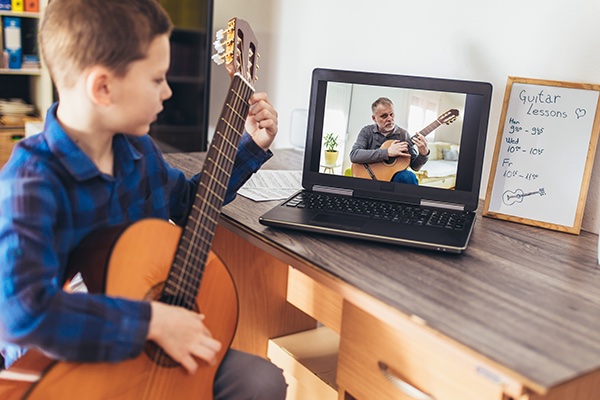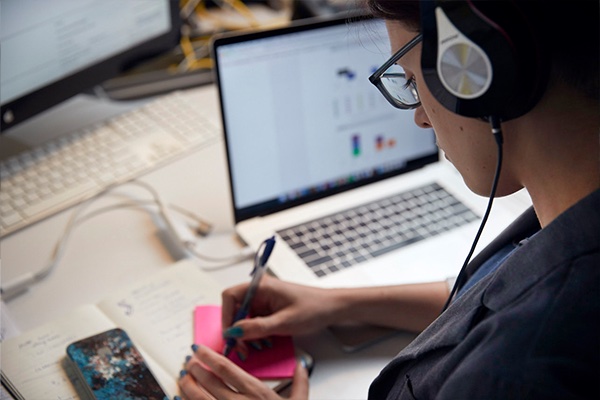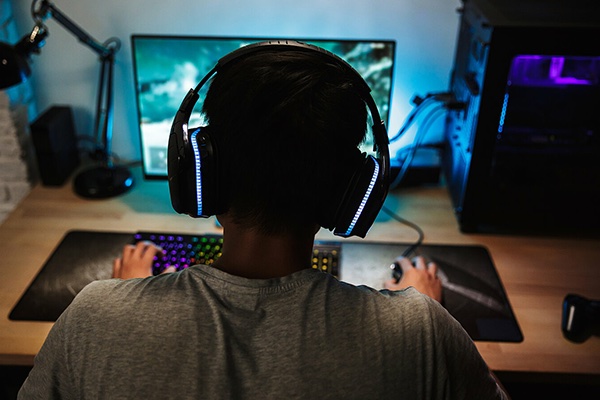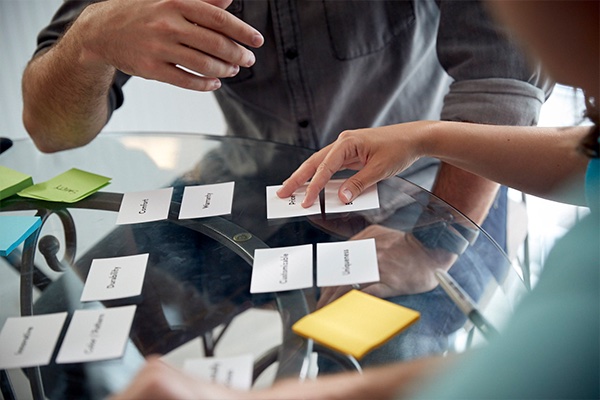What’s Next for Service Design in An Increasingly Remote and Contactless World?
Few of us imagined the world would essentially shut down in the way that it did last year and for much of 2021. However, as offices, schools, and other public places open back up, we’re faced with the question of what our new normal will look like — and what we want it to look like.
Through isolation and lockdowns, we were given ample time and opportunity to re-examine how we were living; what we had accepted as our normal; and, for arguably the first time in modern history, to completely pause and reinvent the rules.
■ 27% of workers say they’d never or rarely work from their employer’s office in an ideal world
■ 39% say they’d want to always or usually work from the office
■ 34% say they want a mixture of both
■ 48% of workers say they expect their employer to make permanent policy changes to expand remote working post-pandemic
As a result of a large-scale event of the magnitude of a pandemic, we’ve witnessed society grapple with the future in a pendulum-like swing from one extreme to another. Now, product developers and service designers have to grapple with the challenge of creating intimacy at arm’s length.
What will post-pandemic service design look like?
On one end of the pendulum swing is the push for an extreme that’s based around contact and intimacy. Certain experiences are difficult to replicate virtually — i.e. live performances, sporting events, and social gatherings.
On the other end of the pendulum swing is the push for a permanently remote, contactless world. The pandemic called many of our basic habits into question — hygiene and proximity to each other, for instance — and many people found peace in the shift to social distancing and increased privacy.
Humans tend to think dichotomously; however, the future of service design will run along two threads — the desire for contact and the desire for distance, simultaneously. Companies and brands have to consider and develop both if they are to win in this new reality. The hospitality industry is a microcosm of this. This industry has infinite person-to-person interactions that have had to be adapted to be contactless. The silver lining is that a whole new world of optionality has opened up as a result of the pandemic. Service design is now challenged with delivering adaptive new experiences and customer journeys through a variety of touchpoints and ecosystems.
Design should be human-centered; a holistic shift more accurately reflects the diverse needs of people; it acknowledges the fact that some people are introverts, some are extroverts, others struggle with anxiety, and it’s critical to develop solutions for each customer type. Introverts, for example, traditionally wouldn’t be the first ones to voice a complaint. In the past, they would go to public places during non-peak hours or choose a virtual option if it was available.
Service design is about understanding what people truly need and then figuring out how to deliver that — or decide not to accommodate them and lose part of your business.
What are some of the major shifts in service design in 2021?
One of the industries that has been most impacted by the pandemic is telehealth. The space is highly regulated; however, COVID-19 forced the governing bodies to greenlight a number of telehealth innovations out of necessity. During this time, underserved communities, people who couldn’t travel — often for health reasons, ironically — and rural populations experienced improved access to healthcare solutions.
Previously, treatment was only accessible to the sliver of the population who met a particular set of qualifications. Self-monitoring solutions and other remote solutions, which were accelerated past bureaucratic red tape by the pandemic, have accelerated the democratization of telehealth.
Another change that will more broadly affect service design is a rethinking of best practices. In almost every customer experience regardless of the industry, companies and brands need to take the time to develop a third model. For many people, they’d rather experiences be either entirely in-person or completely remote. On the remote side of the spectrum, they can control the variables in their own space and optimize their experience. The end-user has more individual authority to choose their own adventure. But the third model is based on a hybrid approach, with even more flexibility. We’re seeing this play out in the modern workplace.
It’s evident in the way specializations are emerging. Workplace “all-stars” are popping up and accelerating the use of various remote and digital tools. People also now have more permission and infrastructure to interact remotely and contactless. With virtual interactions having gained a newfound respect and validity, service design will have to offer up more diverse experiences and optionality for user types.
How can companies and brands maintain connection and intimacy with their customers in an increasingly remote, contactless world?
Closeness, proximity, and uniqueness of experience are three of the best places to start when we think about intimacy in service design. Think about live performance, which has suffered exceptionally from the pandemic. Performers and venues have attempted to mimic the sensation and intimacy of in-person performance. Some have turned to recordings and live streams. The question is: What can you do with video that you can’t do in person? Close-up shots, for instance. It’s a chance to explore new possibilities and think about how to deliver unique experiences in any affected industry.
How do you make an event feel live and in the moment? How do you turn it into a multi-media event? The takeaway for any brand is to avoid treating these pandemic-created shifts as an awful departure from what we knew and focus on instead of adjusting to the new rules. But again, how can companies achieve intimacy using these new rules?
First, you have to decide which rules you want to follow, discard, and build on top of. What is the appropriate level of intimacy for the experience you’re trying to deliver? A large part of it is getting people to interact with each other, whereas a chef’s table is about exclusivity.
It’s the difference between a brand versus a community within a brand. Nurturing enthusiasts and brand followers gives them a sense of identity, which opens the door to another kind of intimacy altogether. Affiliation is fairly close to self-actualization on the hierarchy of needs. Service design is deeply psychological and empathy-driven, which also means that a product isn’t simply a product — it’s a mechanism to create a sense of belonging.
Maintaining passion in a silo is extremely difficult. Xbox LIVE is the perfect case study of this. The online platform was way ahead of its time in that regard because it made people realize they didn’t have to be in the same room to play Halo or whatever game they wanted to. Then, they rolled out headsets, new services, and a wide variety of features that encouraged in-game interactions between players all over the world.
As a company, you only have a full-fledged brand when you can establish a community around your offering. The next level is developing an identity that transcends locality. Part of service design in an increasingly contactless world is giving people other avenues and outlets to connect with each other and your brand. Provide a forum for users and enthusiasts to celebrate your brand, each other, and whatever experience-based identity you have established.
During the pandemic, some brands chose to ride the situation out without making major adjustments. They took more of a triage approach. For some businesses, this was arguably the only strategy that made sense — and they will take the triage approach the next time a cataclysmic event takes place.
Now, with sports, for example, the fans are already conditioned to feel a sense of community without the requirement of location-based specificity. Enjoying games and talking about their favorite teams on social media are not geographically constrained activities. They can do these things from their phones in any time zone.
The future of service design is giving customers, users, and fans more ways to participate. A great example of this was the Louvre setting a completely virtual tour of the museum, so people from all over the world could enjoy their masterpieces during quarantine and lockdowns.
How do shifts in service design affect the technicians and the people behind the curtains?
One of the lesser talked about aspects of post-pandemic service design is how it will affect the people delivering the experiences from behind the scenes — the technicians.
The technicians have to work by these new rules without a service blueprint and so service design thinking has to account for them and adapt the tools to support them — or risk losing the service providers. This means keeping their safety and wellbeing top of mind, especially if they are offering services to large groups such as in an auditorium or stadium setting.
What remains the same about service design is that it has to be sustainable, repeatable, and service delivery has to be optimized. People, props, and processes will always matter, and in times of difficulty, with relinquished control and more chaos, there’s more room for innovation.
People Also Ask These Questions About Service Design
Q: What is service design?
A: Service design is the design process of creating sustainable, fully optimized experiences for both customers and service providers. A service designer strategizes and organizes people, props, and processes to improve customer and employee experience.
Q: What makes for good service design?
A: Good service design is empathy and insight-driven instead of assumption-driven. A great service designer analyzes their customers and users in multiple ways — by asking questions, interviewing them, and actually observing them in the field or using the product to identify pain points. Service innovation comes from these rich ethnographic insights that inform every stage of the customer lifecycle.
Q: Who are the best service design companies?
A: The best service design companies are able to find new disruptive insights and make them actionable to ensure the service is something people actually need and find meaningful. Ideally, the service design firm you choose to work with will also have the ability to conduct contextual and in-person research with end-users to understand if a service is meeting customer needs.
Q: What does a service design consultancy do?
A: A service design consultancy develops strategies to satisfy customer needs, the demands of stakeholders, and the needs of the service providers. At the same time, a service design consultancy makes sure that its strategy is economical, repeatable, user-friendly, and sustainable. Service design also sees major overlap with user experience design (UX design), customer experience, and digital transformation, but an agency has to understand how to execute each of these disciplines. Some agencies are hands-on, while others operate more as a consultancy.













